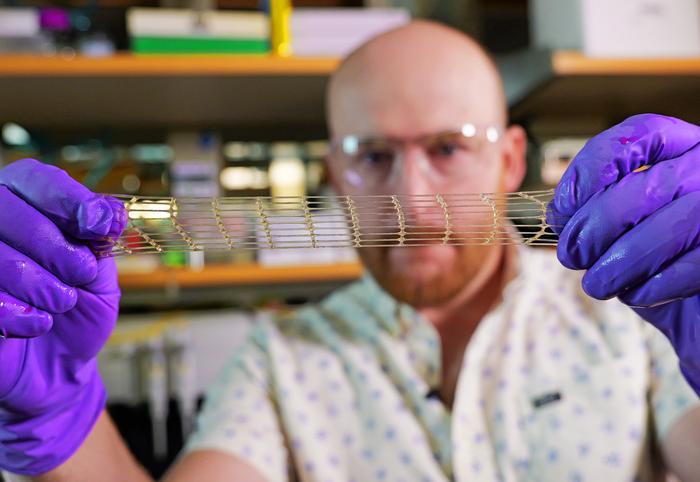A new advancement in 3D printing technology is opening doors for various medical applications, including custom implants and heart bandages. Researchers at CU Boulder, in collaboration with the University of Pennsylvania, have developed a 3D printing method that produces materials that are both strong and flexible, capable of adapting to the body’s specific needs.
Innovative Material for Medical Use
The team, led by Professor Jason Burdick of CU Boulder’s BioFrontiers Institute, has created a material that can withstand the heart’s constant beating, endure joint pressure, and conform to different shapes and sizes. Their findings were published in the August 2 edition of Science.
“Cardiac and cartilage tissues are similar in that they have very limited capacity to repair themselves. When they’re damaged, there is no turning back,” said Burdick. “By developing new, more resilient materials to enhance that repair process, we can have a big impact on patients.”

Nature-Inspired Innovation
Traditional biomedical devices are typically mass-produced, lacking the flexibility for personalized implants. 3D printing offers a solution by enabling the creation of customized shapes and structures. Unlike conventional printers, 3D printers build objects layer by layer using materials such as plastics, metals, or even living cells.
Hydrogels, often used in making contact lenses, have been a promising material for artificial tissues and implants. However, conventional 3D-printed hydrogels often fail under stress, either breaking when stretched or cracking under pressure.
Burdick’s team drew inspiration from worms, which form solid yet flexible “blobs” by entangling themselves. By mimicking this entanglement with long molecular chains, they developed a new printing method called CLEAR (Continuous-curing after Light Exposure Aided by Redox initiation).
Remarkable Resilience and Adhesion
Tests showed that materials printed with CLEAR were more durable than those made with traditional 3D printing methods. One researcher even ran over a sample with a bike, demonstrating its strength. Additionally, these materials adhered well to animal tissues and organs.
“We can now 3D print adhesive materials strong enough to support tissue mechanically,” said Matt Davidson, a research associate in the Burdick Lab.
Potential for Transforming Medical Care
Burdick envisions these materials being used to repair heart defects, deliver tissue-regenerating drugs directly to organs, support cartilage, and even replace traditional sutures with needle-free options that minimize tissue damage.
The team has filed for a provisional patent and plans further studies to understand how tissues interact with these new materials.
Beyond medicine, this method has potential applications in research and manufacturing, offering a more environmentally friendly 3D printing process by eliminating the need for additional energy to harden parts.
“This is a simple 3D processing method that people could ultimately use in their own academic labs as well as in industry to improve the mechanical properties of materials for a wide variety of applications,” said Abhishek Dhand, a researcher in the Burdick Lab and doctoral candidate in the Department of Bioengineering at the University of Pennsylvania.
For more detailed information, the full study can be accessed at Science.org. The original article is available at EurekAlert.

